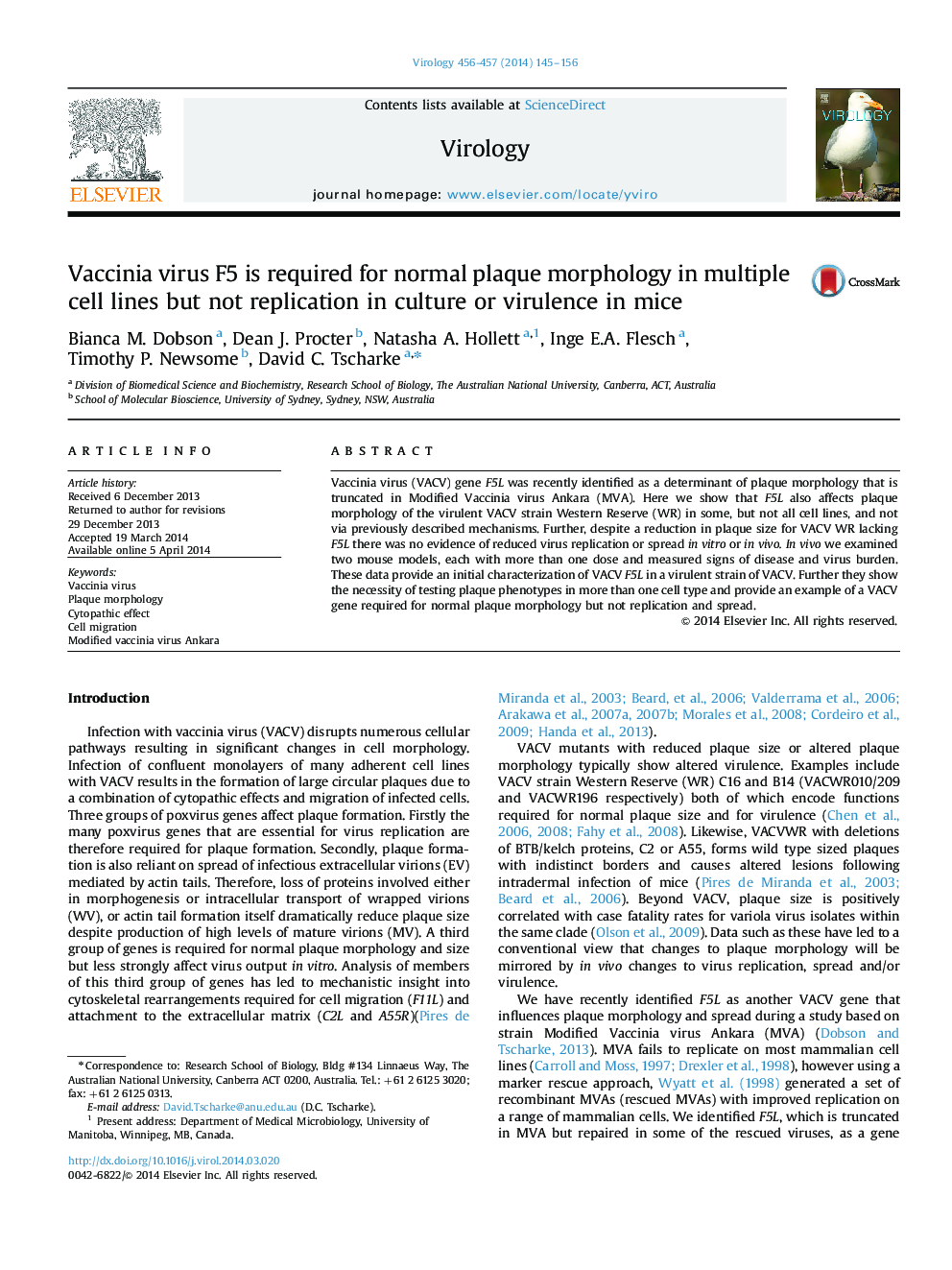| Article ID | Journal | Published Year | Pages | File Type |
|---|---|---|---|---|
| 6140164 | Virology | 2014 | 12 Pages |
â¢VACV protein F5 has a role in plaque morphology in a subset of cell lines.â¢VACV F5 was not associated with differences in VACV replication in vitro.â¢VACV F5 was not needed for VACV growth, spread or virulence in two mouse models.â¢VACV F5 does not act via to alter plaques by previously described mechanisms.
Vaccinia virus (VACV) gene F5L was recently identified as a determinant of plaque morphology that is truncated in Modified Vaccinia virus Ankara (MVA). Here we show that F5L also affects plaque morphology of the virulent VACV strain Western Reserve (WR) in some, but not all cell lines, and not via previously described mechanisms. Further, despite a reduction in plaque size for VACV WR lacking F5L there was no evidence of reduced virus replication or spread in vitro or in vivo. In vivo we examined two mouse models, each with more than one dose and measured signs of disease and virus burden. These data provide an initial characterization of VACV F5L in a virulent strain of VACV. Further they show the necessity of testing plaque phenotypes in more than one cell type and provide an example of a VACV gene required for normal plaque morphology but not replication and spread.
